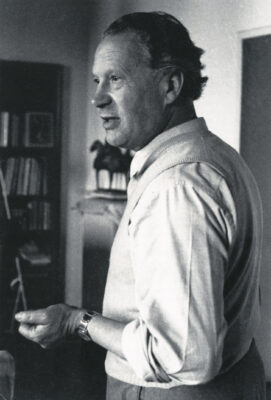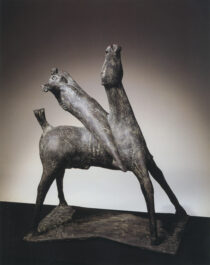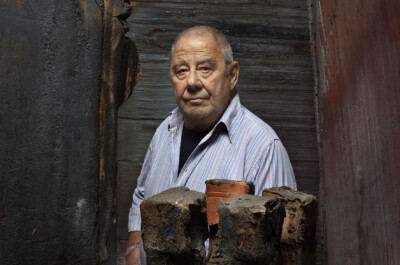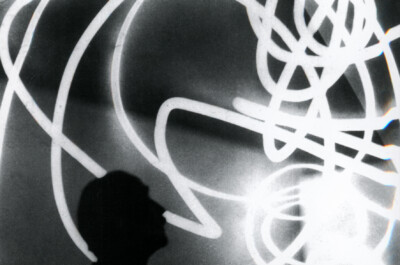Marino Marini, born in Pistoia in 1901, from 1917 he went to the fine arts academy in Florence where he studied painting and etching, and from 1922 he followed Domenico Trentacoste’s sculpture course. From a very early age he was interested in the avant-gardes, as well as in the expressive possibilities of ancient, archaic, Etruscan and medieval sculpture; the latter was at the heart of his figurative culture, formed by looking at the Romanesque and Gothic monuments in Pistoia. His preference for archaic forms was in fact to be seen in his paintings from the 1920s and 1930s. In 1926 he settled in Florence and joined the Novecento group, together with which he exhibited in 1928 and 1929.
In 1927 he met Arturo Martini who, in 1929, asked him to take over his position as professor of sculpture at the Monza art school, where Marini was to have a studio and where he taught until 1940: in fact, from 1930 to 1948 his sculpture was his main interest and drawings were only used as a backing for studying and planning works of sculpture. In 1929, during a trip to Paris, he met Braque, de Pisis, Laurens, Lipchitz, Maillol, and Picasso. He drew on this experience for enriching his colour, and he was also influenced by Cézanne.
In 1932, at the Galleria Milano, he held his first solo show. Together with his teaching, in the 1930s he undertook many journeys to France, the Netherlands, Germany – where he was much taken by the equestrian sculptures in the cathedrals of Frankfurt, Nuremberg, and Bamberg – Great Britain, Belgium, Austria, as well as many visits to Paris, where he met Campigli, de Chirico, Magnelli, Kandinskij, Tanguy. He took part in the Venice Biennale, the Milan Triennial shows, and the II Quadriennale in Rome where, in 1935, he won the prize for sculpture. In this period, furthermore, he defined certain themes that were to be typical of his sculpture: equestrian gentlemen, pilgrims, “Cavaliere” and “Pomona”.
In 1940 he began to teach in national academies, first in Turin and then in Milan, from where he was to flee in 1942 after his house and studio were bombed, with the loss of almost all of his early works. He then moved to Switzerland and stayed with the family of his wife, Mercedes Pedrazzini, known as Marina; here he came to know Banninger, Giacometti, Haller, Hubacher, Richier, Wotruba, and he began to sculpt again and to exhibit. In 1949 he participated to the exhibition “Twentieth-Century Italian Art” at Museum of Modern Art in New York. He returned to Milan and to his teaching at Brera in 1946, the year in which he developed the subject of heroic “Cavallo e cavaliere” and began his series of “Danzatrice”.
At the 1948 Venice Biennale he met Henry Moore, whom he was to remain friends with and who was to visit him many times during his summer holidays in Forte dei Marmi. Then he met Peggy Guggenheim, who purchased in Milan, directly from the artist, the bronze L’angelo della città (Angel of the City), then located on the terrace of the Venetian residence in Palazzo Venier dei Leoni, on Canal Grande. Moreover, in 1948 Marini came to know Curt Valentin, owner of the Buchholz Gallery in New York, where Marini held a solo show in 1950; the dealer became the artist’s agent for the American collectors’ market, both public and private. In New York Marini met Hans Arp, Beckmann, Calder, Dalì, Feininger, Mies van der Rohe, and entered into contact with a few great patrons, including Blanchette Rockefeller, who purchased from him a bronze horse for her personal collection.
In 1951 a Marini exhibition traveled from the Kestner-Gesellschaft Hannover to the Kunstverein in Hamburg and the Haus der Kunst of Munich. In 1952 he was awarded the Grand Prize for Sculpture at the Venice Biennale. In 1954, on the death of Valentin, Pierre Matisse became his new dealer. In this decade he broke the static balance of his figures and the heroic subject of horsemen evolved into the tragic compositions such as “Miracolo”, “Guerriero”, and “Grido”, and then, in the 1960s, in compositions such as Una forma in un'idea (1966). In 1959, a monumental sculpture was placed in The Hague.
In the post-war period he had begun to paint again and created large-scale works: after a period searching for a synthesis of sculptural form and colour, the process was decided in favour of the latter, treated in a violent, mosaic-like manner; he also established a solid and architectural structure for his figures, producing nudes, jugglers, and horsemen. Among the many shows in which he took part in this period, mention should be made of those in Kunsthaus Zurich (1962), Palazzo Venezia in Rome (1966), and Japan (1978). His works are to be found in museums throughout the world; special collections are to be found in the Galleria Civica d’Arte Moderna, Milan since 1973, the Centro di Documentazione Marino Marini in Pistoia since 1979, created one year before the artist's death in Viareggio in 1980, and in the Museo Marino Marini in Florence, to which the artist and his wife donated important sets of works respectively in 1980 and 1988.




